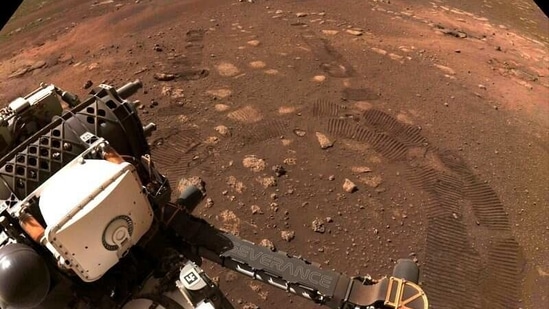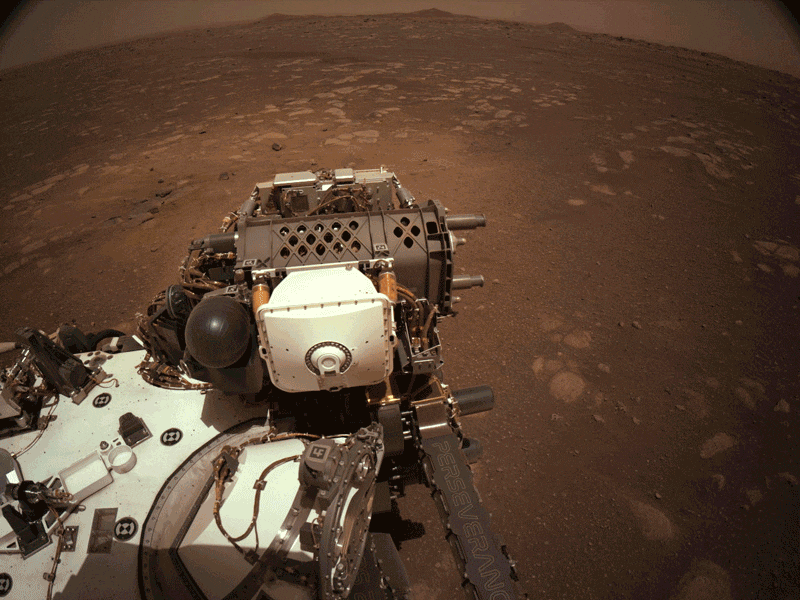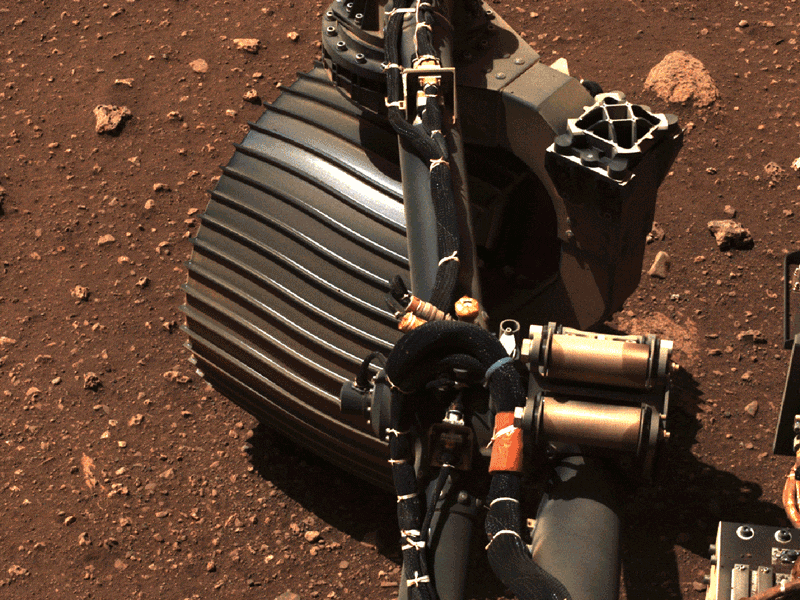Nasa’s Perseverance rover sends images from its first drive on Mars
The National Aeronautics and Space Administration released a new set of images captured by an advanced suite of cameras installed on the vehicle.
Nasa’s Perseverance rover performed its first drive on Mars on Thursday that lasted about 33 minutes, covering 21.3 metres across the Martian surface. A day later, the National Aeronautics and Space Administration released a new set of images captured by an advanced suite of cameras installed on the vehicle.

The first drive served as a mobility test, one of many milestones for mission control, assuring the team that the drive system is good to go for surface operations after the rover landed on the Red planet on February 18. “When it comes to wheeled vehicles on other planets, there are few first-time events that measure up in significance to that of the first drive,” Anais Zarifian, Perseverance rover mobility testbed engineer at Nasa’s Jet Propulsion Laboratory, said in a statement.

Mission controllers finished a software update last week to replace the computer program that helped the rover land on the Martian surface with one they will rely on to probe the planet. On Tuesday, the mission achieved another milestone as Nasa engineers unstowed the rover’s robotic arm for the first time, flexing each of its five joints over the course of two hours. The robotic arm will be used for close-up examination of the geologic features of Jezero Crater, an ancient lakebed formed billions of years ago.
“Tuesday’s first test of the robotic arm was a big moment for us...when we got confirmation of the robotic arm flexing its muscles, including images of it working beautifully after its long trip to Mars – well, it made my day,” Robert Hogg, Perseverance rover deputy mission manager, said in a statement.

Through it all, the rover has been sending images back to Earth. According to the US space agency, the cameras on the mission have already sent around 7,000 images through the Deep Space Network (DSN). In one of the photographs taken from navigation cameras, the wheel tracks were visible after the roundabout, back and forth trek.

The team working on the Mars 2020 mission will test and calibrate every system, subsystem, and instrument on the Perseverance rover before the rover begins pursuing its science goals. The rover will be sent on longer drives and jettison covers that shielded adaptive caching assembly and Ingenuity Mars Helicopter during landing.






